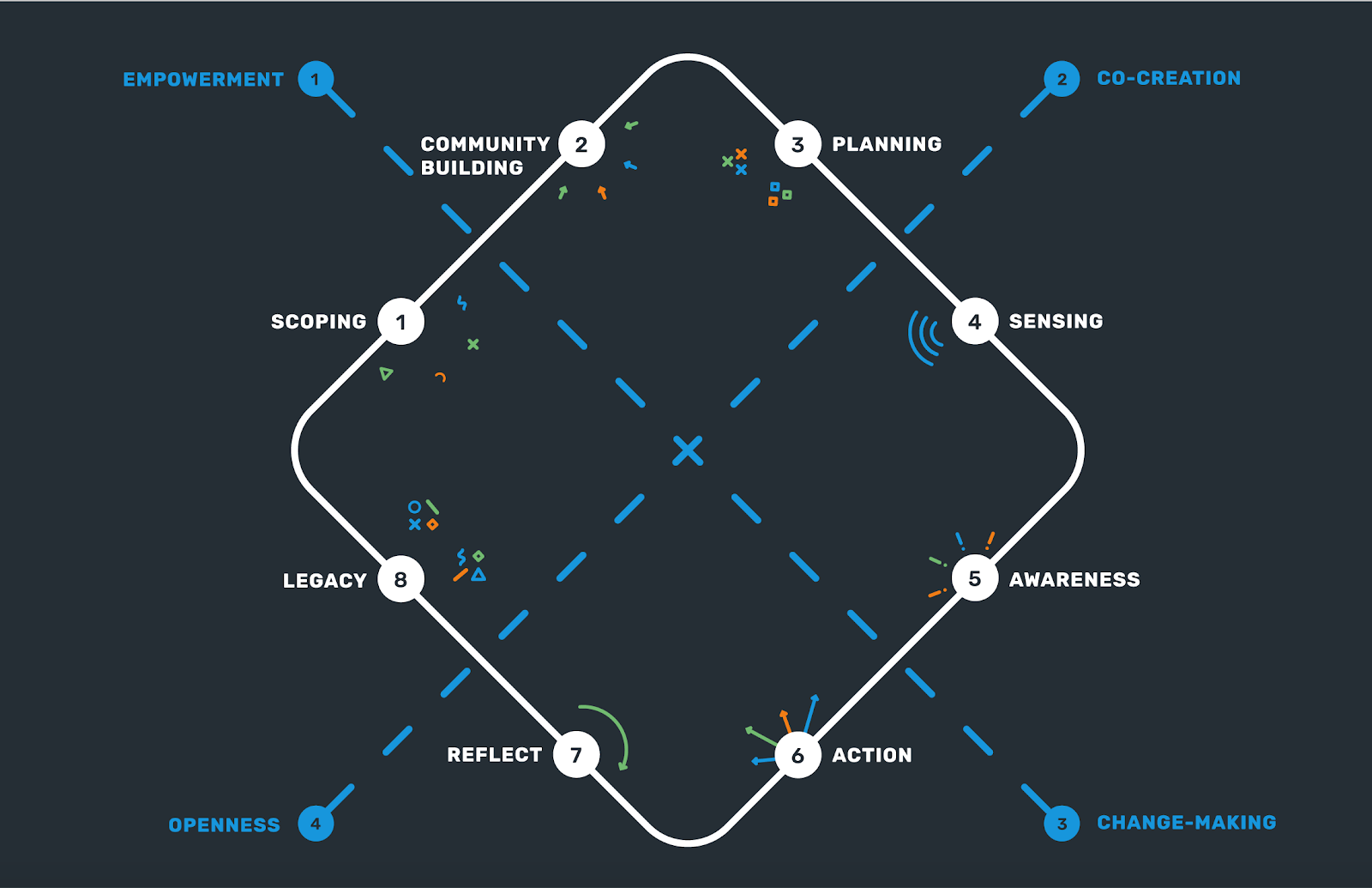Why is it relevant?
Along with the increasing popularity of Citizen Observatories, there is also emerging evidence of difficulties with their implementation. Co-design approaches can help ensure success from the start of the initiative.
How can this be done?
There is no one perfect method or blueprint for co-designing Citizen Observatories. Rather, the appropriateness of a given approach depends on the conditions, resources and purpose (i.e., data collection versus social change) of the new observatory. Nevertheless, most co-design approaches that have been applied to Citizen Observatories share some fundamental principles, such as including different stakeholder perspectives when defining the goal of a Citizen Observatory and agreeing on the ways of working.
Example from the Ground Truth 2.0 project
Ground Truth 2.0 considers Citizen Observatories to be true social innovations, addressing societal challenges by combining new social practices and technological innovations. The Ground Truth 2.0 co-design methodology was developed to facilitate setting up Citizen Observatories that are meaningful and helpful for (local) stakeholders in achieving impact and change. It combines the social, technological and operational dimensions of a Citizen Observatory in one coherent process. The approach brings relevant actors together, guiding them towards a shared understanding and purpose of their Citizen Observatory. It also tailors digital innovations to enable participants to actively collaborate in the collection, exchange and use of information and knowledge.
The Ground Truth 2.0 co-design methodology is adaptable to different geographical contexts, social settings and environmental issues. It has been successfully used in four European and two African countries, producing meaningful results in settings ranging from rural Zambia to urban Belgium.
Example from the Making Sense project
The Making Sense, project aimed to achieve action and change through a design research and co-creation approach. The project invited local communities to use open source software, open-source hardware, digital maker practices and open-source design to address pressing environmental problems.
Making Sense utilised a conceptual and methodological framework (see image below) to provide citizens and communities with the tools they need to enhance the community’s everyday environmental awareness. The stages and principles in the framework serve as a guide to help participants know what is happening at all points in the process. They are specifically geared towards supporting collaborative working methods and community action. The stages of the framework provide an idea of who is involved at which point, what usually happens at that time, and key objectives or milestones to be achieved at each stage so that you know when to move on. The four principles lie at the heart of the process, governing the ethics of the project as a whole. They are intended to serve as a guide for participants in all stages of the project.
The steps are: Scoping, Community Building, Planning, Sensing, Awareness, Action, Reflect and Legacy. The cross-cutting principles are Co-creation, Empowerment, Openness, and Change-making.
The Making Sense framework, showing eight steps and four cross-cutting principles
Useful Resources
PROJECT REPORT: This report contains guidance for co-designing a Citizen Observatory using the Ground Truth 2.0 co-design methodology. It includes an inventory of suggested methods, techniques and tools for each stage of the process.
WEBSITE: An overview of the Citizen Observatories that were set up using the Ground Truth 2.0 co-design methodology.
TOOLKIT: WeObserve Toolkit: Co-designing your observatory includes a range of open access tools developed by WeObserve partners, including some specifically for co-designing Citizen Observatories.
CoP: The WeObserve Co-design & Engage Community of Practice brings together practitioners of Citizen Observatories and citizen science to share and learn different ways of co-designing Citizen Observatories.
TOOLKIT: Citizen Sensing: A Toolkit is a collection of tools from the Making Sense project, many of which support a co-design approach in citizen science.
SCIENTIFIC PAPER: “Making Sense: Empowering participatory sensing with transformation design” demonstrates the value of co-design in citizen science projects through a case study on Making Sense.
SCIENTIFIC PAPER: “Stop the Noise! Enhancing Meaningfulness in Participatory Sensing with Community Level Indicators” demonstrates the value of using a co-design approach through an entire citizen science campaign in Barcelona.
CARD GAME: “Design for Climate Services: A Co-Design Approach” is a co-design card game for developing citizen science projects. It was initially developed during the GROW project and was also tested during a one-day workshop called “Imagining the transformative future of Citizen Observatories to leverage the power of open data, technology and citizen science”, held at the Transformations conference in Chile in October 2019.
PROJECT REPORT: “GROW Observatory: Mission Outcomes” demonstrates the co-design approaches used during a CO project.
You may also be interested in:
I want to set up a Citizen Observatory…
…by identifying a shared issue
This work by parties of the WeObserve consortium is licensed under a Creative Commons Attribution-ShareAlike 4.0 International License. ![]()

